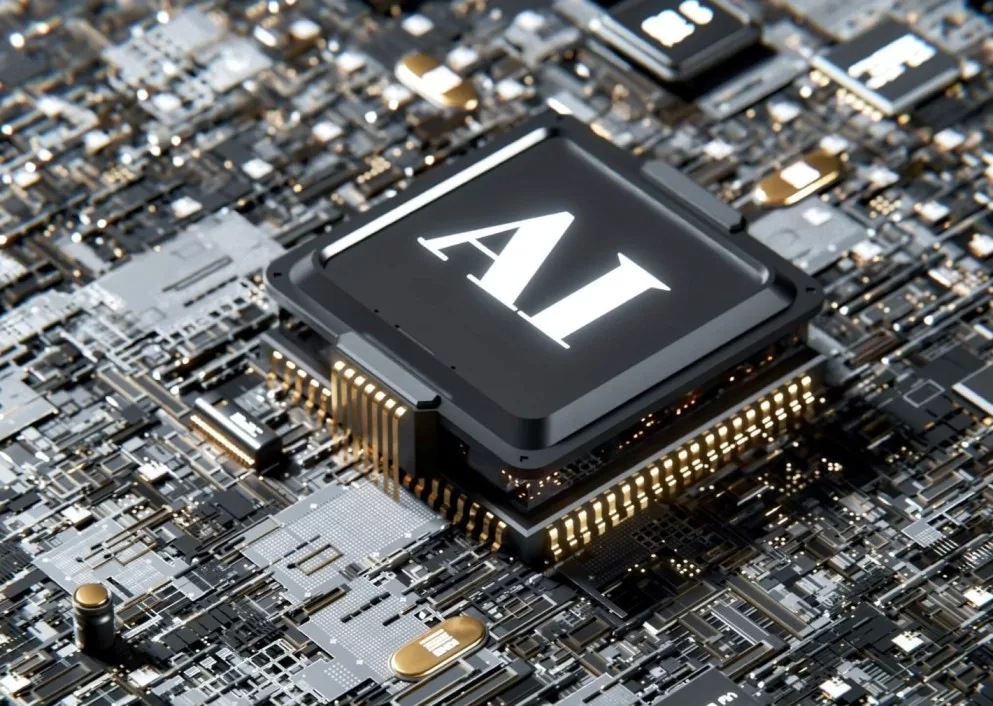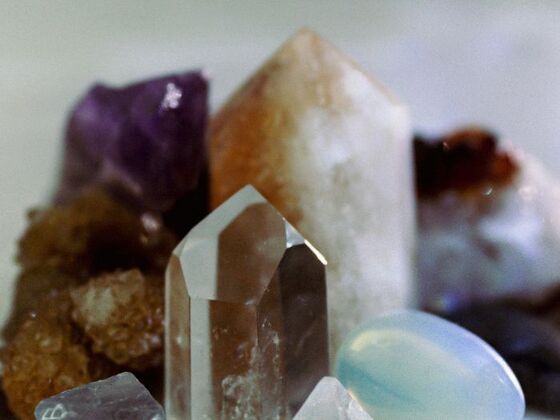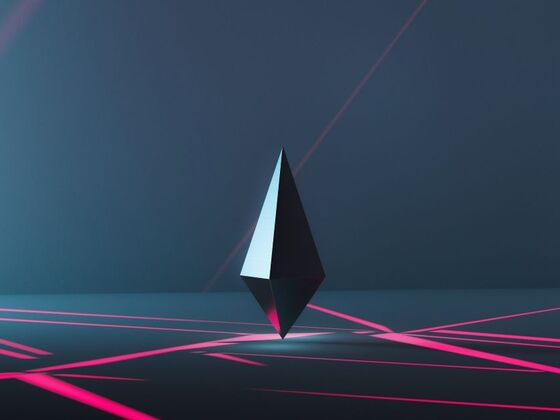The gemstone industry has long relied on human expertise for grading and quality control. However, traditional methods are often subjective, time-consuming, and prone to inconsistencies. Today, artificial intelligence (AI) is transforming gemstone grading and quality control, offering unprecedented accuracy, speed, and transparency. In this article, we’ll explore how AI-powered gemstone grading works, its benefits, real-world applications, and what the future holds for this exciting technology.
What Is AI-Powered Gemstone Grading?
AI-powered gemstone grading leverages advanced technologies, including computer vision, deep learning, and neural networks, to analyse and evaluate gemstones. These systems assess key gemstone attributes, including clarity, colour, carat, cut, and even origin, by processing high-resolution images and vast datasets far beyond human capacity.
For example, convolutional neural networks (CNNs) and transformer models can detect subtle variations in colour and internal inclusions, while generative adversarial networks (GANs) help simulate and enhance gemstone images for training purposes. As a result, AI-powered grading provides rapid, objective, and repeatable evaluations.
Why Traditional Grading Needs Disruption
While manual gemstone grading has been the gold standard for generations, relying on the expertise and intuition of skilled gemologists, it is increasingly clear that this traditional approach faces significant limitations in today’s fast-paced, global marketplace. Several key challenges underscore the urgent need for innovation:
- Inconsistency: One of the most persistent issues with manual grading is inconsistency. Even among highly trained professionals, different gemologists may assign varying grades to the same stone. Factors such as lighting conditions, equipment, and personal interpretation can all influence the final assessment.
- Human Bias: No matter how experienced, human graders are not immune to subjectivity, fatigue, or even unconscious bias. Long hours spent examining stones can result in overlooked inclusions or misjudged colours, particularly when dealing with subtle differences.
- Scalability Issues: As the demand for gemstones continues to soar, driven by expanding digital marketplaces, global trade, and the rise of online jewellery sales, manual grading is struggling to keep up. The process is inherently slow and labour-intensive, making it difficult to efficiently handle large volumes of stones, especially for remote or online transactions.
A Changing Marketplace:
The gemstone commerce landscape is evolving rapidly. Buyers and sellers are increasingly connecting across borders, often without ever meeting in person or physically inspecting the stones. In this environment, the need for reliable, scalable, and remote gemstone authentication is greater than ever. Today’s consumers expect fast, transparent, and trustworthy grading; qualities that manual methods alone cannot guarantee.
In summary, while traditional grading methods have served the industry well, the challenges of inconsistency, human bias, and limited scalability highlight the pressing need for disruption. Embracing new technologies, such as AI-powered grading, is not just a matter of convenience; it is essential for meeting the demands of a modern, digital, and global gemstone market.
How AI Improves Accuracy and Consistency
Artificial intelligence is revolutionising gemstone grading by dramatically enhancing both accuracy and consistency, two qualities that are critical in building trust and value in the gemstone market. Here’s how AI achieves these improvements:
Learning from Vast, Diverse Data
AI models are trained on thousands, sometimes millions, of meticulously annotated gemstone images. Each image is labelled by expert gemologists, capturing a wide range of gemstone types, qualities, and characteristics. This extensive training enables AI to recognise subtle visual cues and patterns that might be overlooked or interpreted differently by human graders. The result is a system that can objectively assess stones with a level of detail and reliability that surpasses traditional methods.
Multi-Task Learning for Comprehensive Evaluation
Modern AI models use multi-task learning, allowing them to evaluate several attributes simultaneously. This holistic approach ensures that each aspect of a gemstone is assessed in context, leading to more balanced and accurate grading. Key attributes analysed include:
- Clarity: AI can detect even the tiniest inclusions and blemishes within a gemstone, thanks to pixel-level image analysis.
- Colour: Unlike the human eye, which can be influenced by lighting and perception, AI quantifies hue, saturation, and tone using objective, standardised metrics.
- Cut: AI algorithms analyse the symmetry, proportions, and brilliance of a gemstone, evaluating how well it reflects and refracts light.
- Carat: Advanced image processing allows AI to estimate the size and weight of gemstones from photographs, reducing the risk of human error and providing quick, accurate carat measurements.
- Origin: By analysing trace elements and growth patterns, AI can help determine a gemstone’s provenance, adding another layer of authenticity to the grading process.
Faster, More Consistent Results
Compared to manual grading, AI-powered systems deliver results at lightning speed, making it feasible to grade large volumes of gemstones efficiently. More importantly, AI’s objectivity means that every stone is evaluated by the same rigorous standards, eliminating inconsistencies that can arise from human fatigue or individual bias.
Transparent, Shareable Grading Reports
Automated systems generate detailed grading reports that clearly explain the basis for each assessment. These reports often include visual aids, such as annotated images or heatmaps, making it easy for buyers, sellers, and appraisers to understand and trust the results. The digital nature of these reports also makes them simple to store, share, and verify, further enhancing transparency throughout the supply chain.
By combining advanced pattern recognition with objective, data-driven analysis, AI is setting a new benchmark for accuracy and consistency in gemstone grading. This not only benefits industry professionals but also empowers consumers to make more informed, confident purchasing decisions.
AI Gemstone Grading Pipeline: Step-by-Step
AI-powered gemstone grading follows a sophisticated, multi-stage pipeline designed to deliver accurate, consistent, and transparent results. Here’s how each step works to ensure every gemstone is evaluated to the highest standards:
- Data Collection: Experts compile large, annotated datasets of gemstone images, covering diverse types, cuts, and qualities.
- Model Training: Deep learning models, such as CNNs and transformers, are trained to extract features and recognise grading criteria.
- Attribute Prediction: The AI predicts clarity, colour, carat, cut, and origin, often providing confidence scores for each attribute.
- Automated Reports: The system generates comprehensive grading reports, often with visual explanations (e.g., Grad-CAM heatmaps) to highlight key features.
By following this comprehensive pipeline, AI-powered systems deliver thorough, unbiased evaluations for every gemstone. This not only supports buyers in making informed decisions but also gives sellers confidence that their gems are being assessed with precision and consistency. As a result, the gemstone grading process becomes faster, more reliable, and more transparent, benefiting the entire industry.
Real-World Applications and Benefits
AI-powered gemstone grading is no longer a futuristic concept—it’s already transforming the gemstone industry in exciting and tangible ways. From mine to market, AI is streamlining processes, enhancing transparency, and building trust among all stakeholders.
For Manufacturers:
AI-driven grading systems are revolutionising quality control on the production line. Automated analysis enables manufacturers to assess gemstones with unprecedented speed and precision, dramatically reducing the time and labour traditionally required for manual grading. This not only cuts operational costs but also ensures that every stone meets rigorous, consistent standards before reaching the market.
For Retailers:
In today’s competitive marketplace, transparency is key to winning customer trust. Retailers leveraging AI-generated grading reports can provide buyers with clear, data-backed assessments of gemstone quality. These digital reports often include detailed imagery and explanations, empowering customers to make informed decisions with confidence. The result is a stronger reputation for honesty and integrity, setting forward-thinking retailers apart from the competition.
For Collectors and Investors:
The world of gemstone collecting and investment demands absolute confidence in authenticity and value. AI-powered grading delivers this by minimising human error and subjectivity, offering collectors and investors reliable, repeatable assessments. With greater assurance in the grading process, buyers can invest in gemstones with peace of mind, knowing their assets have been evaluated using the latest technological advancements.
Industry Leaders Setting the Pace:
Innovative companies such as Sarine Technologies and Gemtelligence are at the forefront of this AI revolution. Their pioneering grading platforms harness advanced machine learning and computer vision to deliver consistent, objective results at scale, raising the bar for accuracy and reliability across the industry. As these technologies become more widely adopted, they not only elevate industry standards but also boost consumer confidence on a global scale.
For instance, companies like Sarine Technologies and Gemtelligence are pioneering AI-driven grading systems that deliver consistent results at scale. These advancements are raising standards and boosting consumer confidence worldwide.
Addressing Challenges and Limitations
While the promise of AI-powered gemstone grading is undeniable, the path to widespread adoption is not without its obstacles. To fully harness the benefits of this technology, the industry must thoughtfully navigate several key challenges:
Data Scarcity:
The backbone of any successful AI system is access to vast amounts of high-quality, annotated data. In gemstone grading, this means curating extensive libraries of gemstone images, each meticulously labelled by expert gemologists. However, such datasets are still relatively rare, especially for exotic or newly discovered gemstone varieties. Overcoming this hurdle requires ongoing collaboration between technology providers, gemological institutes, and industry professionals to expand and diversify training datasets. As more data becomes available, AI models will continue to improve in accuracy and reliability.
Explainability:
For AI to gain the trust of both professionals and consumers, its decisions must be transparent and understandable. Enter explainable AI (XAI), a set of techniques designed to shed light on how and why an AI model arrives at a particular grading decision. By providing visual explanations (such as heatmaps highlighting inclusions or colour zones), XAI helps users see the reasoning behind each assessment. This transparency not only builds confidence in AI-generated reports but also empowers gemologists to better interpret and validate automated results.
Expert Oversight:
Despite rapid advances in AI, the human touch remains irreplaceable. Experienced gemologists play a crucial role in validating AI outputs, especially in complex or borderline cases where subtle nuances may escape even the most sophisticated algorithms. Furthermore, as new gemstone types and treatments emerge, human experts are essential for updating and refining AI models to keep pace with industry developments. Rather than replacing human expertise, AI serves as a powerful tool that augments and enhances the skills of gemological professionals.
By proactively addressing these challenges, the gemstone industry can ensure that AI becomes a trusted partner, streamlining grading processes, improving consistency, and ultimately raising standards across the board. The future lies in a harmonious blend of cutting-edge technology and time-honoured human expertise, working together to bring greater accuracy, transparency, and confidence to gemstone grading worldwide.
Future Trends: What’s Next for AI in Gemstone Grading?
The journey of AI in gemstone grading is just beginning, and the next wave of innovation promises to reshape the industry in remarkable ways. Several emerging trends are poised to make AI-powered grading even more powerful, accessible, and trustworthy in the coming years:
- Self-Supervised Learning: New techniques will reduce reliance on annotated data. This not only accelerates model development but also allows for rapid adaptation to new gemstone varieties and grading criteria. As a result, the industry can expect faster innovation and broader coverage of gemstone types, including rare and emerging stones.
- Mobile and Web Apps: AI-powered grading tools are making their way into user-friendly mobile and web applications, putting the power of advanced analysis into the hands of both professionals and enthusiasts. Imagine being able to snap a photo of a gemstone with your smartphone and instantly receive a detailed, AI-generated grading report.
- Blockchain Integration: By integrating AI grading results with blockchain, each stone’s grading history, provenance, and ownership can be securely recorded and easily verified. This digital ledger not only helps prevent fraud and counterfeiting but also gives buyers and sellers unparalleled confidence in the authenticity and journey of every gemstone. The synergy between AI and blockchain will create a more open, reliable, and efficient marketplace.
As these innovations continue to mature, AI will keep raising the bar for accuracy, transparency, and efficiency in gemstone grading. The future holds a harmonious blend of advanced technology and industry expertise, ensuring that every gemstone is evaluated with the highest standards of trust and precision. The next chapter in gemology is bright, digital, and accessible to all.
Frequently Asked Questions (FAQ)
AI grading systems can match or exceed human accuracy, especially in detecting subtle flaws and colour variations. However, accuracy depends on the quality of the training data and the frequency of ongoing model updates.
AI enhances grading by providing objective, repeatable results, but human expertise remains essential for complex cases and model validation.
AI-powered grading offers faster, more consistent evaluations, transparent reports, and increased confidence in gemstone authenticity and value.
Summary of AI Gemstone Grading Tools
AI-powered gemstone grading is revolutionising quality control by delivering objective, consistent, and scalable evaluations. By leveraging computer vision, deep learning, and explainable AI, the industry is overcoming traditional challenges and building greater trust among buyers and sellers. As technology advances, embracing AI will be key to staying ahead in the evolving world of gemstones.
Ready to Start Your Gemstone Journey?
Don’t wait to discover the world of gemstones! Explore these essential reads right away.
Fascinated by this article and want to deepen your gemstone expertise? Dive into our comprehensive Gemstone Encyclopedia. Here, you’ll discover detailed information about hundreds of precious and semi-precious stones, including their properties and values.
For those interested in the rich cultural significance and fascinating stories behind these treasures, our History section offers captivating insights into how gemstones have shaped civilisations. Or perhaps you’d like to learn more about birthstones?
And if you’re considering gemstones as more than just beautiful adornments, visit our Precious Metal Investing guide. Here you will learn how these natural wonders can become valuable additions to your investment portfolio.






![Pigment analysis of Raphael's masterpiece[7][8] reveals the usual pigments of the renaissance period such as malachite mixed with orpiment in the green drapery on top of the painting, natural ultramarine mixed with lead white in the blue robe of Madonna and a mixture of lead-tin-yellow, vermilion and lead white in the yellow sleeve of St Barbara.](https://gemstonesinsider.com/wp-content/uploads/2025/09/Raphael-Madonna_Sistine_sm-560x420.jpg)



